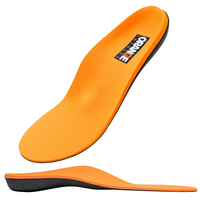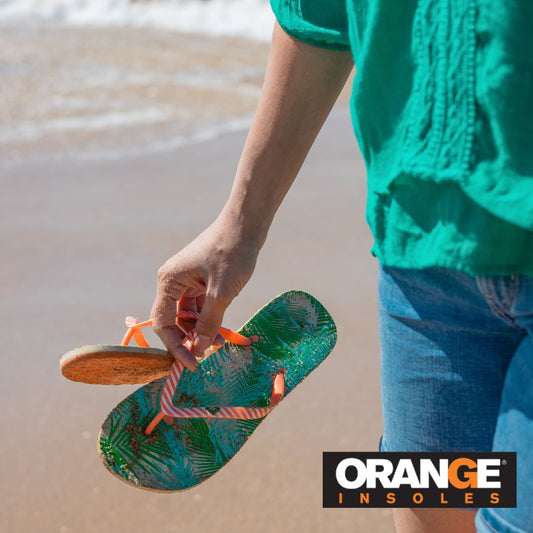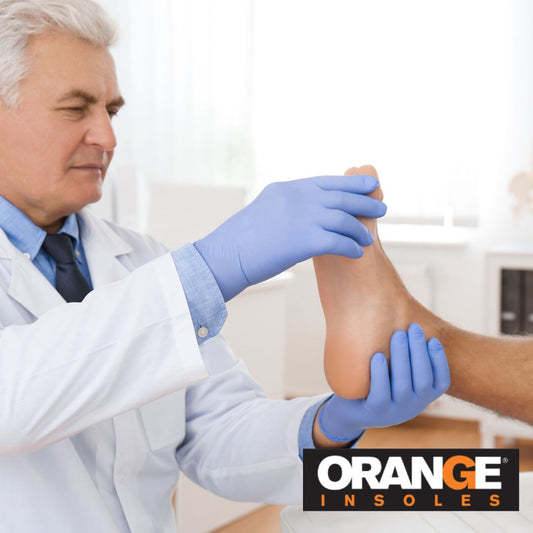After a long Thanksgiving meal, you finally sink into the couch only to realize your feet are throbbing!
You didn’t go for a long run. You didn’t stand in the kitchen for hours. So what gives?
Believe it or not, what’s on your plate can have just as much impact on your feet as what’s on your feet.
Big holiday feasts, especially those packed with salt, sugar, and refined carbs, can trigger inflammation, swelling, and even nerve sensitivity in your lower limbs.
Let’s take a closer look at why your feet might ache after Thanksgiving (and other holiday meals) and how you can enjoy your favorite foods without the painful side effects.
1. Sodium Overload = Swollen Feet and Ankles
From brined turkey to stuffing and gravy, holiday dinners are famously salty.
Sodium plays an important role in muscle and nerve function, but too much of it causes your body to retain water. That extra fluid often collects in the lower legs, ankles, and feet, thanks to gravity.
This post-meal swelling (called edema) can make shoes feel tight and feet feel heavy or sore especially if you’ve already eaten several sodium-rich meals in a row.
To help:
-
Drinking more water helps your body flush out excess sodium.
-
Add potassium-rich foods like sweet potatoes, spinach, and bananas to your meal; they help balance electrolytes and reduce fluid buildup.
-
Try gentle movement or a short walk after eating to promote circulation.
2. Sugar and Carbs Can Spike Inflammation
Holiday desserts are irresistible - but that sugar rush comes at a cost. When you eat too much sugar, your blood glucose spikes. That triggers a cascade of inflammatory molecules called cytokines, which can aggravate pain and swelling in joints and soft tissue including your feet.
If you already deal with plantar fasciitis, arthritis, or neuropathy, a few slices of pie (plus soda or wine) can make those symptoms flare up faster than you’d expect.
High-carb foods such as mashed potatoes, dinner rolls, and stuffing - have a similar effect. They convert to glucose quickly, fueling inflammation that lingers for hours or even days.
👉 Learn more about how sugar affects your circulation and nerves in The Sweet Truth: How Sugar Consumption Impacts Your Foot Health.
3. Rich, Fatty Foods Slow Circulation
While a little butter or cream isn’t the enemy, heavy holiday dishes like casseroles, gravy, or cheesy potatoes are loaded with saturated fats. These can thicken your blood and make it harder for it to flow freely through the small vessels in your feet and toes.
Poor circulation means your tissues don’t get the oxygen and nutrients they need, leading to that familiar feeling of cold, aching, or tingly feet after a big meal.
If your feet frequently feel sluggish after rich foods, it may be time to balance out the menu:
-
Swap creamy sauces for olive oil or broth-based ones.
-
Add more fiber from vegetables to support healthy blood flow.
-
Stay hydrated - water thins the blood naturally and keeps nutrients moving.
4. Alcohol Adds to the Inflammation Equation
A few holiday drinks can amplify every other issue on this list.
Alcohol causes dehydration and temporarily expands blood vessels, which can lead to both swelling and inflammation.
It also increases uric acid levels, a key trigger for gout, a form of arthritis that often attacks the big toe joint. That’s why many people with gout report flare-ups right after indulgent meals involving meat, seafood, and alcohol.
If you’re celebrating with drinks, alternate each serving of alcohol with a full glass of water to protect both your liver and your feet.
5. The Hidden Role of Nutrient Deficiency
Here’s the flip side: it's not just what you eat too much of, but also what you might be missing.
Certain nutrients help keep your feet (and the rest of your joints) resilient:
-
Magnesium helps relax tight muscles and prevent cramps.
-
Vitamin B12 supports nerve function and circulation.
-
Vitamin D and calcium maintain bone strength and reduce foot fatigue.
-
Omega-3 fatty acids (found in salmon, walnuts, and chia seeds) combat inflammation.
A diet heavy in refined foods and sweets can deplete these nutrients, making your feet more vulnerable to pain and inflammation.Reintroducing nutrient-dense, whole foods in the days after a feast leafy greens, lean proteins, whole grains, and healthy fats will help rebalance your system.
6. How to Help Your Feet Recover After a Big Meal
If your feet ache or swell after Thanksgiving dinner, don’t worry, the fix isn’t complicated. You just need to reset your circulation and reduce inflammation.
Here’s how to bounce back:
-
Hydrate: Aim for at least 8 glasses of water the next day. Add lemon or cucumber for extra anti-inflammatory benefits.
-
Move gently: A brisk walk or light stretching promotes circulation and lymphatic drainage.
-
Elevate your feet: Prop them above heart level for 15–20 minutes to reduce swelling.
-
Add support: Swap your house slippers for supportive insoles to improve posture and blood flow while moving around the house.
If you notice recurring soreness or stiffness after big meals, you might be feeling the effects of long-term inflammation, something that better foot alignment and daily activity can help counter.
The Takeaway: Your Feet Reflect What You Eat
Your feet are the foundation of your body - but they’re also a mirror for your overall health.
When your diet causes inflammation, fluid retention, or poor circulation, your feet are often the first to feel it.
So this Thanksgiving (and every holiday after), enjoy your favorite dishes - but in moderation, with plenty of water, vegetables, and movement to balance things out.
Maybe you want to check our article on Healthy Holiday Dinner Swaps so you can still enjoy good food and be healthy!
And if you really want to show your feet some gratitude this year, give them the support they deserve with insoles that promote proper alignment and circulation.
👉 Explore comfort and support options at the Orange Insoles Shop.

























































